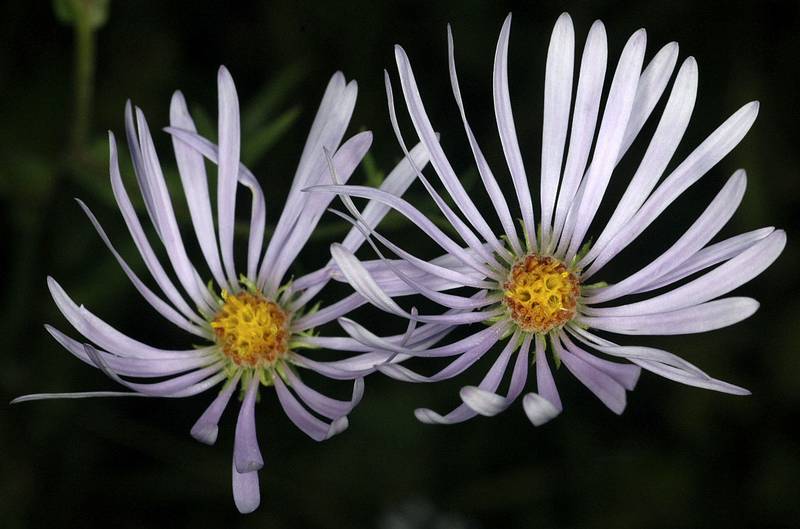Symphyotrichum spathulatum
Symphyotrichum fontinale
western aster, western mountain aster
Leaves glabrous and entire, the lower ones oblanceolate and petiolate, the others narrower and sessile, 3-15 cm. long and 3-10 mm. wide.
Heads 1-many in a flat-topped inflorescence;
involucre 5-7 mm. high, its bracts usually pointed, narrow, linear or linear-oblong, green to the base and minutely purple-tipped;
disk flowers numerous, yellow;
rays 20-50, blue or violet, 6-15 mm. long;
pappus of numerous capillary bristles.
Achenes hairy.
Symphyotrichum spathulatum
Symphyotrichum fontinale
Occurring chiefly east of the Cascades crest in Washington; British Columbia to California, east to the Rocky Mountains.
- Local floras:
BC,
CA,
OR,
WA
- Local Web sites:
CalFlora,
CalPhotos,
Flora NW,
PNW Herbaria
WildflowerSearch
iNaturalist (observations)
USDA Plants Database
- LBJ Wildflower Center
- SEINet
- Plants of the World Online
- Encyclopedia of Life
- Wikipedia
- Google Image Search


